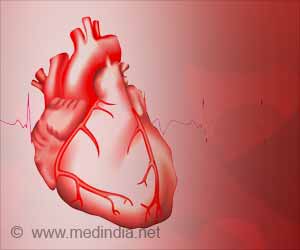
‘Most of the time fainting is harmless, but sometimes people faint due to serious medical conditions such as an irregular heartbeat, or arrhythmia. The study suggests that low-risk patients can be safely sent home by a physician after spending two hours in the Emergency Department (ED), and medium and high-risk patients can be sent back home after six hours if no danger signs are detected.’
Read More..Tweet it Now
New research suggests that low-risk patients can be safely sent home by a physician after spending two hours in the ED, and medium and high-risk patients can be sent home after six hours if no danger signals are detected.Read More..
Most of the time fainting is harmless, but a small percentage of people faint due to serious medical conditions, such as an irregular heartbeat, or arrhythmia. These arrhythmias usually come and go quickly, and the person's heart rhythm returns to normal by the time the ambulance arrives or they reach the ED. Fear of these arrhythmias coming back have led to patients being kept in the ED for eight to 12 hours.
Approximately half of all patients who are hospitalized for fainting across Canada are admitted so their heart rhythm can be monitored. However, only a small proportion of patients will experience a dangerous irregular heartbeat, heart attack or death within a month of fainting.
"Before this study, we didn't know which fainting patients needed to be monitored in the Emergency Department, and how long they needed to be monitored. We didn't know who needed to be hospitalized in order to catch life-threatening conditions. Now we have answers to these questions that will help improve patient care, and potentially reduce ED wait times and hospital admissions." said lead author Dr. Venkatesh Thiruganasambandamoorthy, an emergency physician and scientist at The Ottawa Hospital and associate professor at the University of Ottawa.
Dr. Thiruganasambandamoorthy's team previously created a simple tool to help emergency physicians identify those fainting patients who are at greater risk of adverse events. In this observational study, they used the tool to rank 5,581 patients from six EDs across Canada as low (0.4 percent risk of an arrhythmia within 30 days), medium (8.7 percent) or high risk (25.3 percent).
Advertisement
The team found that half of the arrhythmias were identified within the first two hours of arrival at the ED for low-risk patients, and within six hours for the medium and high-risk patients. They also found that 92 percent of the underlying arrhythmias were identified within 15-days among the medium and high-risk patients.
Advertisement
Low-risk patients, the majority of fainting patients, can be discharged home after two hours without further heart rhythm monitoring. After six hours have passed for medium and high-risk patients, a physician can decide whether to admit them to the hospital while considering their overall health, ability to cope at home, injuries and need for further monitoring. The research team found that medium and high-risk patients benefit from home heart rhythm monitoring for 15 days, which should ideally start when they leave the ED.
"Our study suggests that three-quarters of the 200,000 fainting patients who come to Canadian Emergency Departments every year are at low risk of adverse events. They can safely be sent home once they've been in the ED two hours and a physician sees them," said Dr. Thiruganasambandamoorthy.
Researchers at The Ottawa Hospital are known around the world for creating decision rules that improve patient care.
The study was funded by the Physicians' Services Incorporated Foundation, Innovation Fund for Academic Health Sciences Centres of Ontario through The Ottawa Hospital Academic Medical Organization, the Canadian Institutes of Health Research, Heart and Stroke Foundation of Canada, and the Cardiac Arrhythmia Network of Canada.
Research like this is possible because of generous support for research to improve patient care at The Ottawa Hospital. It was also supported by The Ottawa Hospital's Ottawa Method's Centre.
Source-Eurekalert











